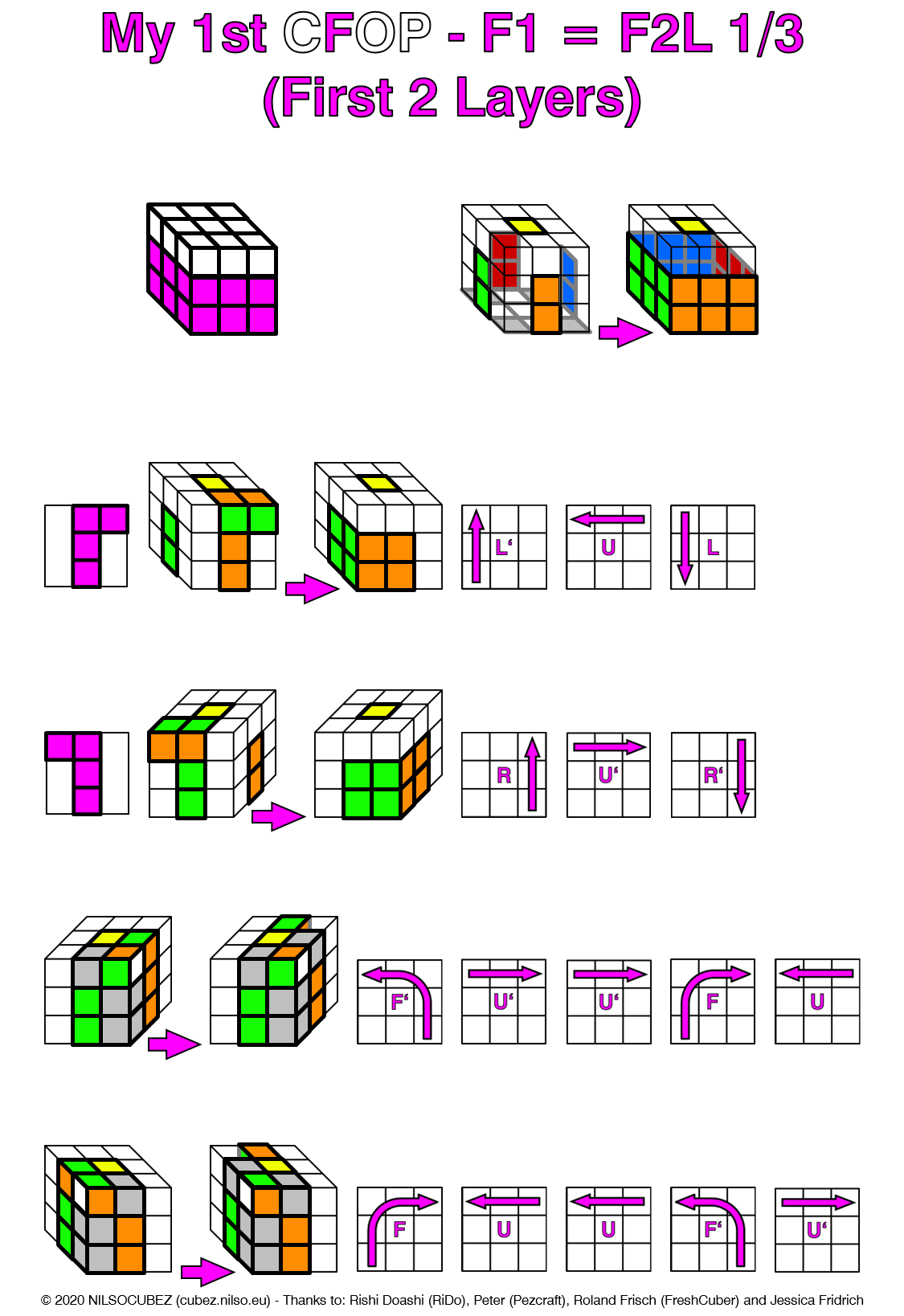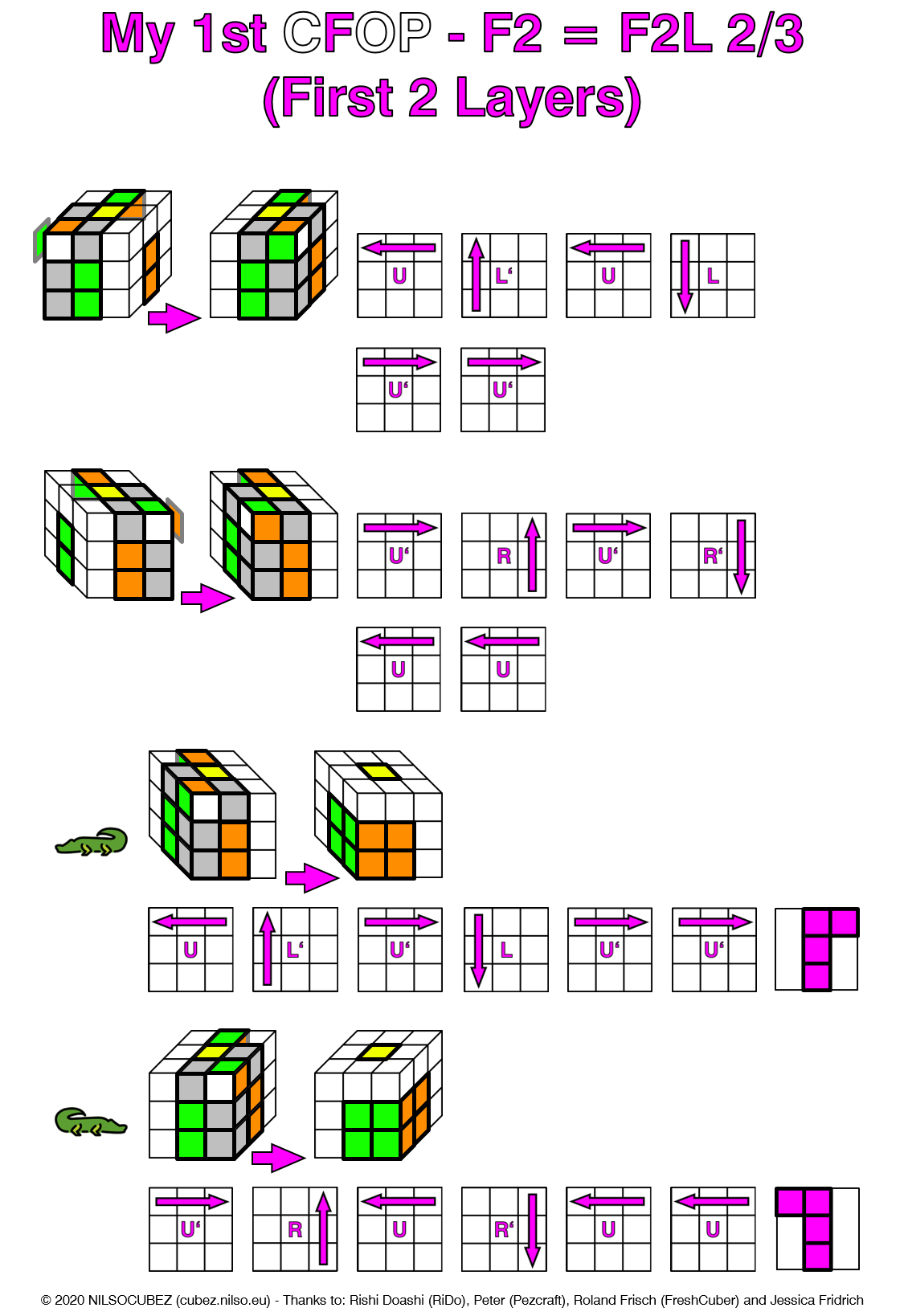An earlier version of My 1st CFOP solution included RiDo’s Hunting Story for F2L. He uses three main algorithms for the three possible ways the corner piece and edge piece can orientated next to each other.
Each of the algorithms is named after an animal with a similar “colour scheme” as the top layer of the two pieces: Crocodile (same colour), Tiger (two different colours) and Eagle (1 colour plus white “head”). The ways the corner pieces are “catching” the edge pieces are compared with the hunting method of the animals.
I still use a great part of the algorithms, too, but in a more intuitive way.
Preparations
The three hunting algorithms start with the corner piece in an upper corner in the front (left or right) and the edge piece in the upper rear edge. The “target slot” (the corner in layer 1 and 2 where you want to position your two pieces) is the front corner underneath your corner piece. To get to this point you might need some preparation.
If you already have the pair of pieces connected in the right way in the upper layer, then you don’t need the hunting algorithms – you have already “caught the prey”.
To take the “prey” (the pair of edge and corner piece) into the “hideout of the predator” (the target slot) you start with the two pieces above the center and edge piece with the “upper layer” colour of your two pieces, so that they form a bicolour “L form”. Then you only need the three moves of the “L algorithm” to put them into their “slot” in the two bottom layers (next to the L form):
You let the “target slot” jump upwards like a predator (L’/R), push the “prey” into the fangs of the predator (U/U’) and take the prey back into the hideout of the predator (L/R’). The “L algorithm” is also used as the final moves of the Crocodile and Eagle algorithms.
If the two pieces are connected, but the orientation of the pieces is not correct, then you need to separate them, first (see below).
If the corner piece is in the wrong front corner for the hunting algorithm, then you need another small algorithm to move it to the other corner.
Crocodile Algorithm
Tiger Algorithm
Eagle Algorithm


